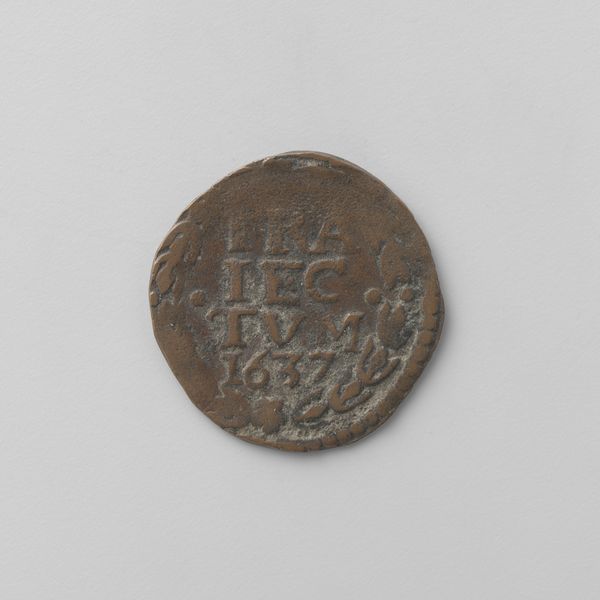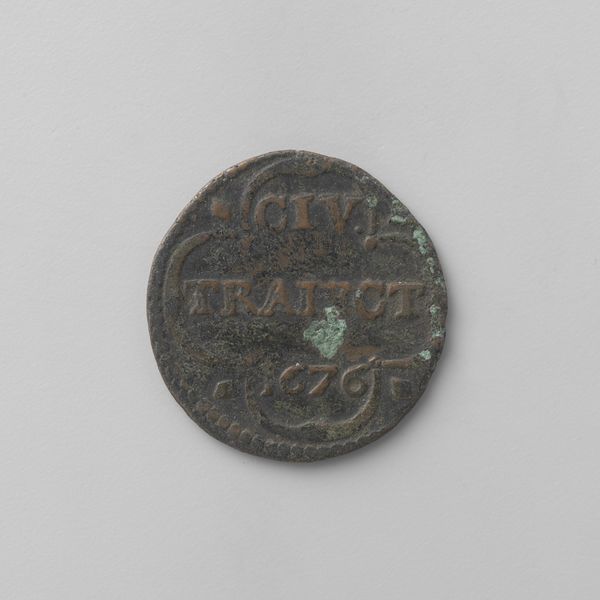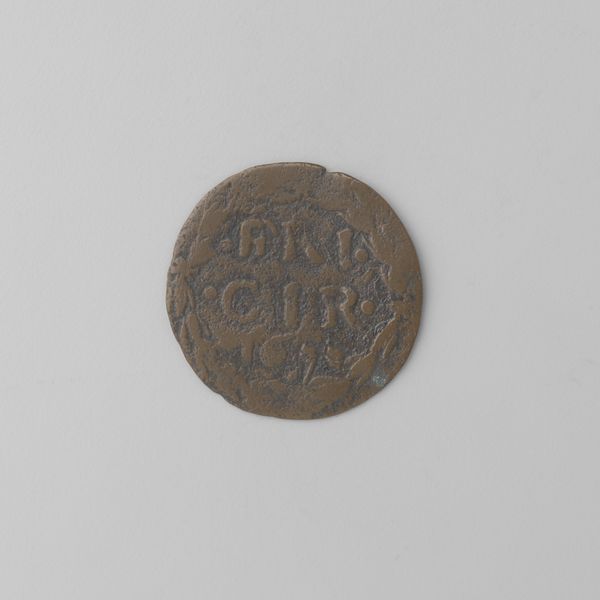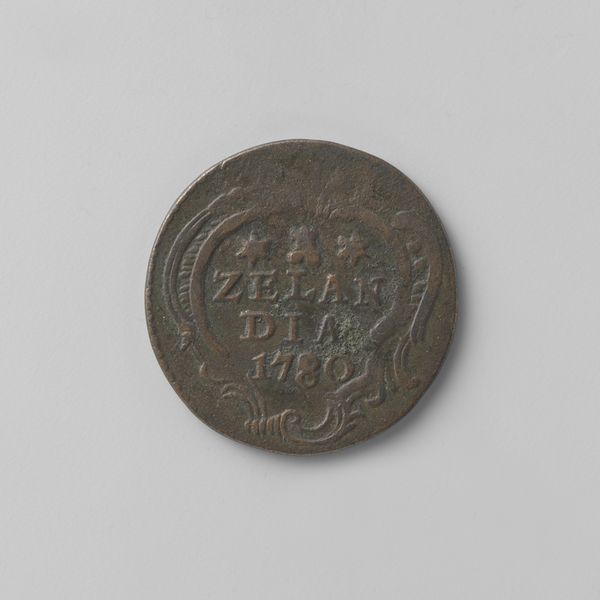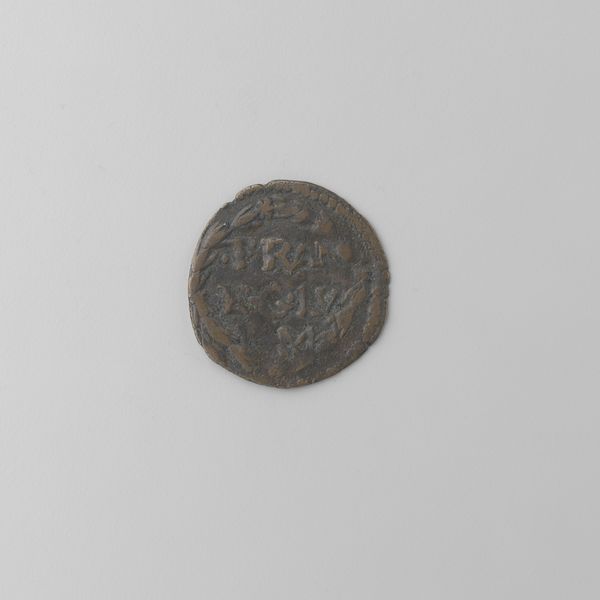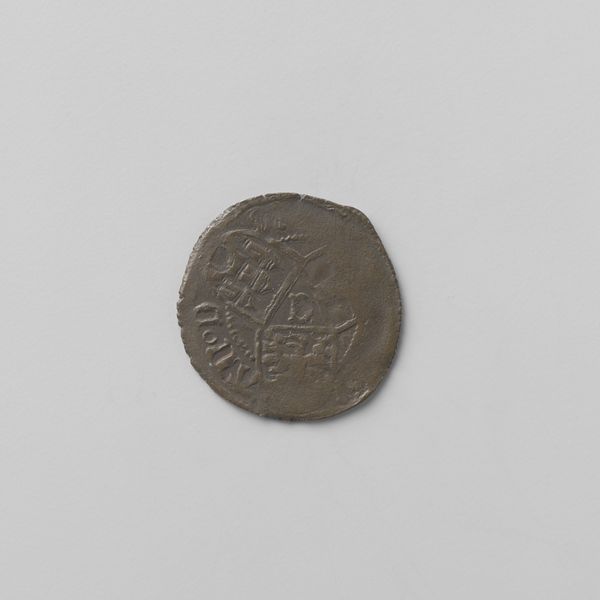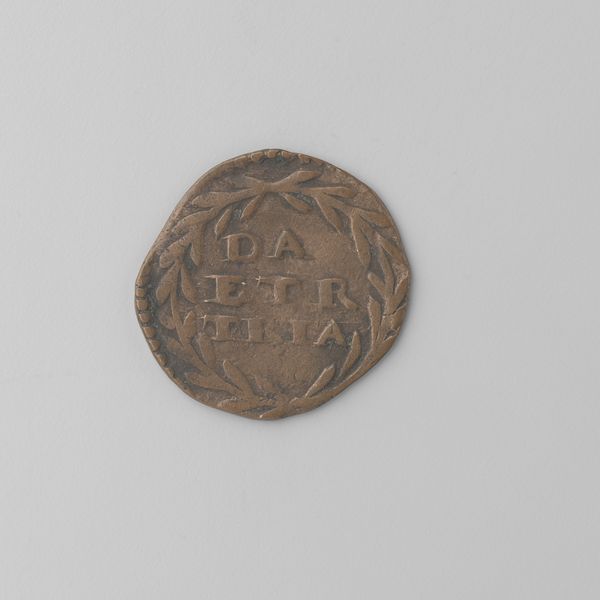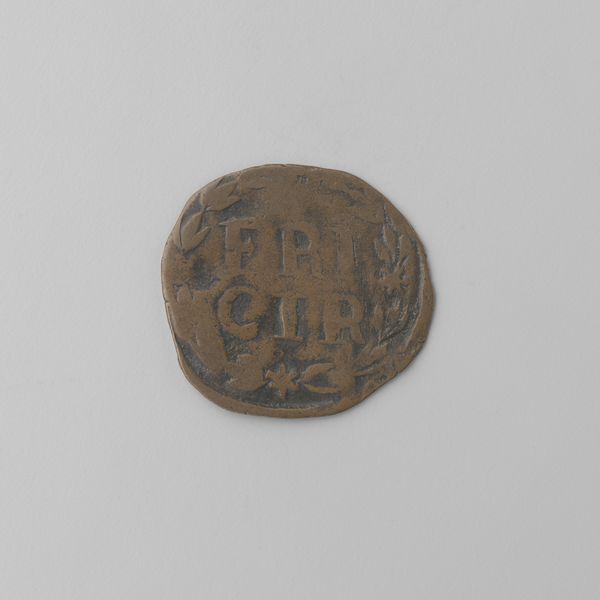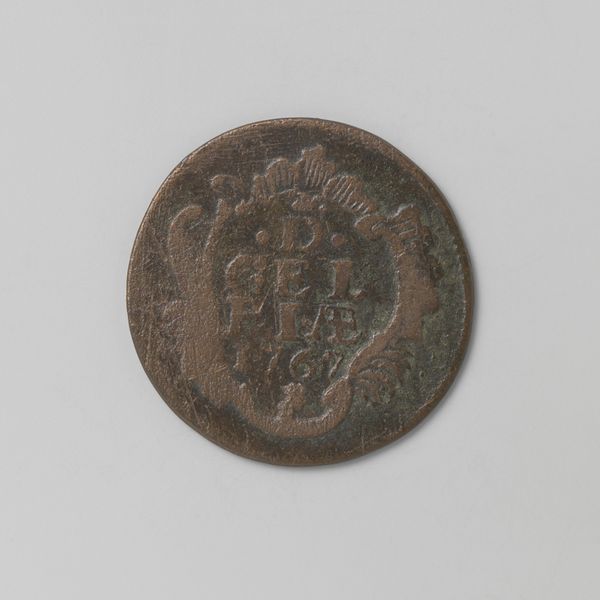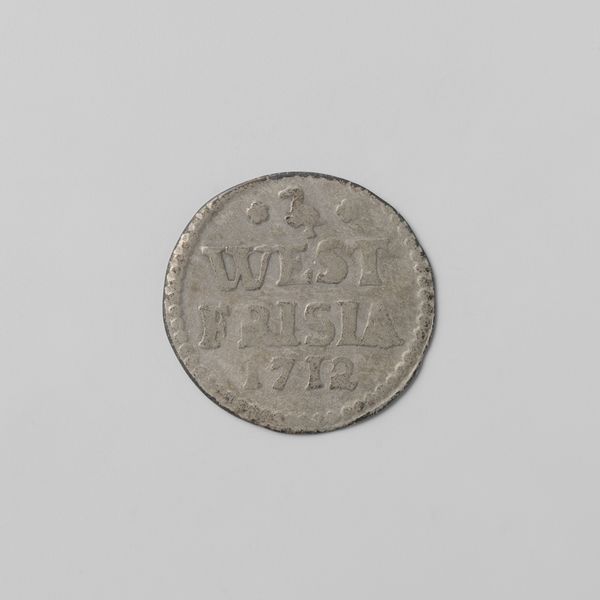
print, metal
#
baroque
#
dutch-golden-age
# print
#
metal
Dimensions: diameter 2.1 cm, weight 3.02 gr
Copyright: Rijks Museum: Open Domain
Curator: Here we have a coin from the city of Utrecht, dating back to 1677. The text on the coin reads, CIVI TRAIECT, a Baroque engraving etched into the surface. Editor: The coin's weathered surface really captures my attention. You can see evidence of handling and circulation over centuries; the texture and subtle shifts in color tell a story about the lifespan of an everyday object transformed by the passage of time. Curator: Indeed, and the inscription itself is quite interesting, too. "CIVI TRAIECT" is a Latin abbreviation, short for "Civitas Traiectum," referring to Utrecht. This connects the artifact directly to the Dutch Golden Age and to that city-state's cultural identity. The craftsmanship applied is impressive. Look at how much information is packed into such a small, circular form. Editor: Right, let's not forget that such metal coinage reflects complex networks of extraction, production, and circulation of materials—an integration into trade routes that is really a map of human activities. How did its creation involve both the skilled hands of artisans and the often-invisible labor in the mines or foundries producing such metalworks? Curator: The very design itself invites us to see the relationship between its form and its function. Coins need to be of a size, weight, and design easily grasped by the user while being durable enough for trade. Semiotics offers another pathway of inquiry, considering its surface pattern as a series of carefully selected symbolic representations of economic power. Editor: I agree about those issues of trade, but it’s not just a design; its weight would matter—a standardized form across economic actors allows trade. Let us consider its possible devaluation as it moved through several owners' hands and their labor to have it and spend it as they may wish. The fact that this coin may no longer have value shows us how meaning and value transform in this world. Curator: Ultimately, an analysis of the "Duit van de stad Utrecht, 1677," gives us the tools to not just appreciate history but also grasp how aesthetics interact within practical application. Editor: Examining its construction illuminates socio-economic connections through physical components. This enriches both an art perspective and materialist outlook.
Comments
No comments
Be the first to comment and join the conversation on the ultimate creative platform.
